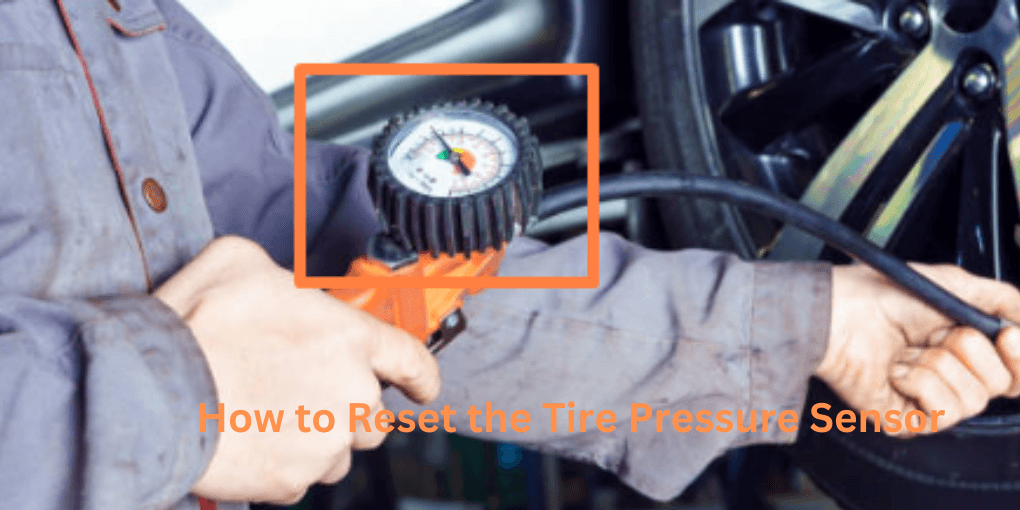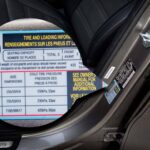How to reset the tire pressure sensor, inflate the tires to the proper pressure, and then use the vehicle’s reset button or drive for a few minutes.
Maintaining correct tire pressure is crucial for safety, fuel efficiency, and prolonging tire life.
Driving with incorrect tire pressure can lead to poor vehicle handling and increased braking distances.
Modern vehicles come equipped with a Tire Pressure Monitoring System (TPMS) that alerts drivers when tire pressure is too low.
Sometimes, after adjusting the tire pressure, the TPMS will need to be manually reset to ensure the system accurately reflects the changes.
This reset process can often be as simple as pressing a button or driving at a certain speed for a brief period.
Regularly checking and resetting the tire pressure sensors can help maintain optimal vehicle performance and enhance road safety.
Introduction To Tire Pressure Sensors
Tire pressure sensors are critical components in modern vehicles. These sensors monitor the air pressure inside the tires.
They ensure the vehicle runs efficiently and safely. The correct tire pressure helps in maintaining traction, reducing wear, and improving fuel economy.
A sensor reset might be necessary to maintain accurate readings after changes to tire pressure or replacements.
The Role Of Tire Pressure Monitoring In Vehicle Safety
Tire pressure monitoring systems (TPMS) play a vital role in vehicle safety. They alert the driver when tire pressure is too low.
Low pressure can lead to poor handling, increased stopping distances, and tire failure.
All of these issues can cause accidents. A well-functioning TPMS helps maintain optimal tire pressure, thus enhancing safety on the road.
Common Reasons For A Tire Pressure Sensor Reset
- Tire Replacement: New tires might have different pressure requirements.
- Seasonal Temperature Changes: Cold or warm weather can affect tire pressure.
- System Errors: Glitches in the TPMS can cause false alarms.
- Battery Replacement: Sensors have batteries that may need replacing.
Locating Your Vehicle’s Tire Pressure Sensor
Your vehicle’s safety and performance hinge on properly inflated tires. A crucial component of maintaining tire health is the Tire Pressure Monitoring System (TPMS).
Among other elements, knowing the location of tire pressure sensors is fundamental for resets and maintenance. Let’s delve into how you can pinpoint these sensors.
Understanding Your Vehicle’s Tpms
Your car’s TPMS is a guardian angel for your tires. It alerts you when tire pressure drops.
A yellow indicator light on your dashboard appears if there’s an issue. Most cars since 2008 have this system.
Each tire has a sensor. It informs you of low pressure. Some cars show which tire is affected. These sensors sit inside the tire, part of the valve stem or attached to wheels.
Tips For Finding The Sensor On Various Car Models
Finding the sensor varies by car model. Here we provide tips for common cars:
- Ford: Often part of the valve system, look near the tires’ air cap.
- Toyota: Mounted on the wheel, close to the valve stem.
- Chevrolet: Inside the tire, attached to the rim.
- Honda: Near the valve stem or inside the wheel assembly.
Refer to your owner’s manual for specific instructions. Your manual will guide you to your car’s sensor location. It’s the best resource for accurate information.
| Car Brand | Sensor Location |
|---|---|
| Ford | Valve system |
| Toyota | Wheel, near valve stem |
| Chevrolet | Inside tire, on rim |
| Honda | Valve stem area/wheel assembly |
A multimeter can test sensor function. Match the reading with standard values in the manual.
Preparation Steps Before Resetting
Proper preparation is key to successfully resetting the tire pressure sensor. Follow these steps to ensure a smooth process.
Ensuring Proper Tire Inflation
Correct tire inflation is crucial. Check each tire’s pressure with a reliable gauge. Refer to the vehicle’s manual for the recommended pressure.
Adjust the tire pressure if necessary. Over or under-inflated tires can cause false readings.
Gathering Necessary Tools And Equipment
Gather the following tools before starting:
- Tire pressure gauge to check the air pressure
- Air compressor to adjust tire inflation
- Vehicle’s manual for specific instructions
- Reset tool if applicable for your car model
Check your dashboard for any required reset processes outlined in the manual.
Have all items ready to avoid delays during the reset procedure.
Resetting The Tire Pressure Sensor
Ensuring your tire pressure sensor is correctly reset after filling your tires is essential for accurate readings.
Reset procedures vary by manufacturer, but most are straightforward.
A quick reset can mean the difference between a smooth ride and a potential tire emergency.
Follow these instructions for a hassle-free experience.
Step-by-step Reset Process For Different Manufacturers
Each vehicle has its unique method to reset the tire pressure sensor. Below are simplified guidelines for major car brands.
| Manufacturer | Reset Process |
|---|---|
| Toyota: | Press the reset button near the steering wheel for three seconds. |
| Ford: | Turn the ignition to ‘ON’, then press the brake pedal before cycling the ignition off and on three times. |
| GM: | Use the menu in the instrument panel to find the ‘Tire Pressure’ menu, then hold the checkmark button. |
| Honda: | Under the settings menu, select ‘TPMS Calibration’, then ‘Calibrate’. |
Troubleshooting Common Issues During Reset
Sometimes, the tire pressure sensor may not reset on the first try. Here’s how to troubleshoot common issues.
- Ensure all tires are properly inflated: Incorrect tire pressure can cause reset failure.
- Check the sensor battery: Dead batteries prevent resetting. Replacement may be necessary.
- Review the owner’s manual: Manuals often have solutions for sensor reset problems.
- Scan for error codes: Use an OBD2 scanner to identify any sensor errors needing attention.
If issues persist, visit a certified mechanic. They can diagnose and fix deeper tire sensor problems.
Post-reset Procedures
After resetting the tire pressure sensor, a few steps ensure everything works properly. These steps are important for your safety and the longevity of your car’s tires.
Confirming Sensor Reset Success
Checking the tire pressure sensor’s status is crucial once you’ve completed the reset process. Your vehicle’s dashboard should display a tire pressure indicator.
This indicator must show correct tire pressures or the absence of warning lights to confirm a successful reset. Perform these checks:
- Start your vehicle and give the system a few minutes to read tire pressures.
- Watch for the tire pressure light to turn off.
- Drive for a short distance to ensure the sensor correctly tracks tire pressure changes.
When To Seek Professional Assistance
There are times when you might need help from a mechanic. Look out for these signs:
- The tire pressure light stays on after the reset and a short drive.
- The sensor gives readings that don’t match manual gauge readings.
- Warning lights flash indicating discrepancies.
Visit a professional if you notice any of these issues. They have the tools and expertise to diagnose and solve complex sensor problems.
Maintaining Your Tire Pressure Sensors
Maintaining your tire pressure sensors is crucial for your safety and your vehicle’s performance.
These sensors keep you informed about your tire’s health. They ensure your journey remains safe and efficient.
Regular Checks And Maintenance Tips
Regular checks keep tire pressure sensors in top condition.
- Check monthly: Monitor pressure and inspect sensors.
- Clean sensors: When changing tires, clean dust and dirt.
- Tire rotation: This is a chance to inspect sensors for damage.
Proper maintenance prevents sensor failures and extends their life.
Understanding Sensor Battery Life And Replacement
Sensor batteries have a lifespan. Usually, they last for 5 to 10 years.
| Years | Check Battery | Replacement Indicator |
|---|---|---|
| 3-5 Years | First Check | Dashboard Warning |
| 5+ Years | Regular Checks | Failure to Read Pressure |
Replace sensors before their batteries fail to avoid issues. Look out for warning signs on your dashboard and reduced responsiveness.
Knowing when to replace sensor batteries is key. Your manual or a professional can guide you.
Frequently Asked Questions Of How To Reset The Tire Pressure Sensor
Can Tpms Be Manually Reset?
Yes, most TPMS can be reset manually. Consult your vehicle’s manual for specific instructions. Usually, it involves pressing a reset button or cycling the ignition key.
What Triggers Tire Pressure Sensor Warning?
Sudden changes in tire pressure, such as a puncture, or environmental factors like temperature drops, commonly trigger the sensor. Regularly check and maintain your tire pressure to prevent false alarms.
How Often Should I Reset My Tire Sensor?
Reset the tire pressure sensor whenever your tire pressure is adjusted or after a tire rotation or replacement. It ensures accurate readings and maintains vehicle safety.
Do All Cars Have Tpms Reset Buttons?
Not all cars have a TPMS reset button. Some vehicles may require driving for a specific distance or using a specialized tool to reset the system. Check your owner’s manual for details.
Conclusion
Resetting your tire pressure sensor is a straightforward task with the right guidance.
By following the steps outlined, you’ll ensure your vehicle’s safety and performance.
Remember the importance of regular monitoring for optimal driving conditions. Drive confidently, knowing you know to maintain tire pressure accuracy.

Sudatta is a passionate automotive enthusiast and expert in the field. With a keen eye for detail and a love for all things automotive, he shares insightful articles and reviews to ignite the automotive passion in readers.




